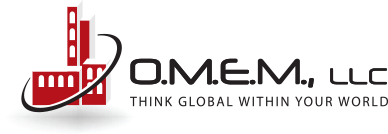
The investment for any form of CMMS, with IRR’s and Expectations of driving Asset Reliability. It can range from hundreds of dollars to millions. Most organizations tap into a relatively small portion of this investment. If utilized correctly as a tool to managing work, it can provide a dramatic return on investment to improve overall productivity from increases in Asset Availability to reducing overall maintenance costs. If utilized correctly, following defined and sound Business Processes and Practices, the data from a CMMS can become both a Troubleshooting and repair manual as well as drive Asset Reliability down to single digits percentages. It is and can be more than simply producing KPI metrics giving the illusion Assets are performing well.
The tendency to Asset management tasks to simply wort harder and put more effort into, doesn’t produce sustainable results, as opposed to true data driven results. Consider the possibilities if the data from the CMMS can actually be trusted and is actually usable for day-to-day event management. Coupled with MRO Storeroom Management and Maintenance Planners lock-step in stride with each other, in their endeavors. Without this strategy, both will struggle or even fail.
The typical hurdle from utilizing the CMMS to its fullest, is the fear of the trades being able to keystroke and maneuver around in it. The key to this success is two fold.
1. System configuration, set up, and function should be in the most logical way possible for the system being utilized and based around the expectations of the User role needs to use it for.
2. Practices such Shift Hand-Offs, Work Execution, Work Planning, Work Scheduling, Materials Planning, Materials Kitting, etc. are best managed utilizing a valid Asset Management System (CMMS)
3. The Set Up, Training, and Documented processes for guidance utilizing the system should be considered as important as safety training.
Our missions is to drive Asset Reliability by fully utilizing the CMMS. Defined Business Processes and Developed Business Practices have yielded plant results to single digit Down Time percentages. Our practices, training, and support have driven results utilizing several CMMS’s to include, SAP, eMaint, Infor EAM, JD Edwards EAM, MP2, and others.

Maintenance Facilitation & Improvement Projects
Department Assessments
Determines current maintenance practices, costs, and effects to facility. Looks for gaps and opportunities related to linkage with operations. Determines level of structure and department efficiencies. Determines level of CMMS leveraging driving Asset Performance.
Improvement Plans
Outlines phases and potential improvement levels. Determines level of commitment from management staff. Identifies boundaries, constrictions, and limitations. Develops improvement path and deliverables. Develops required path to fully leverage the CMMS to drive Asset Reliability.
Build Project Plans
Identifies critical steps and critical path of execution. Establishes milestones, achievement levels, and expectations. Sets project schedule, timeline, and role commitment. Communicates project deliverables and contingencies.
Measure Progress and Performance
Tracks progress of project path. Establishes consistent measurement for continual improvement. Communicates maintenance improvement throughout the organization. Displays full potential and opportunities of achievement.


